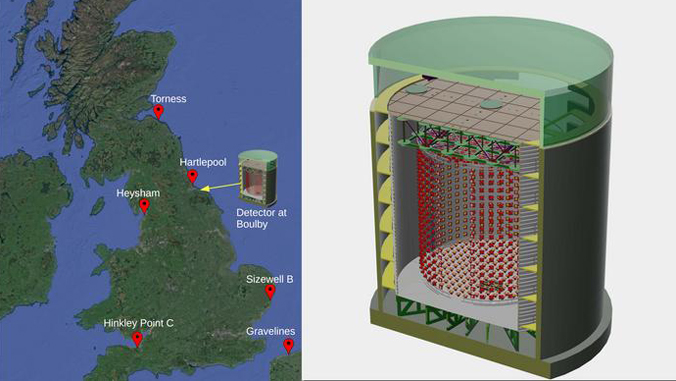
A new detection system for nuclear reactors could help officials determine whether materials are being removed to make weapons has been developed by a University of Hawaiʻi at Mānoa expert.
Nuclear reactors are power plants that generate electricity by splitting heavy atomic nuclei, such as uranium, releasing energy that heats water to produce steam which drives turbines. They act as a key power source for many parts of the world.
Nuclear reactors, however, can potentially be secretly used to make materials for nuclear weapons. But scientists have found that detecting special particles called antineutrinos might help monitor reactor activities from far away, making it easier to verify if a reactor is being used properly.
The detector system is detailed in a new AIP Advances study, co-authored by UH Mānoa Department of Physics and Astronomy Professor John Learned.
“As an isolated island chain heavily dependent on imported fuel, Hawaiʻi has a vested interest in monitoring global nuclear energy developments and ensuring they’re used safely and appropriately,” Learned said. “Our involvement in developing technology to verify proper reactor operations from afar not only contributes to international security but also helps position Hawaiʻi as a leader in nuclear monitoring science, potentially bringing more research opportunities and expertise to our state.”
Detecting, monitoring antineutrinos
Neutrinos are tiny particles with no electrical charge, and antineutrinos are their opposite counterparts, most often created during nuclear reactions. By detecting these antineutrinos and measuring how much energy they have, scientists can figure out details about how a nuclear reactor is being used and what kind of fuel it’s burning.
The detector design uses a phenomenon called Cherenkov radiation, in which radiation is emitted when charged particles moving faster than light pass through a particular medium, similar to sonic booms when crossing the sound barrier.
The researchers proposed to assemble their device in northeast England and detect antineutrinos from reactors in the U.K. and northern France.
The Department of Physics and Astronomy is also involved in two projects in Japan, SuperKamiokande and KamLAND (Kamioka Liquid-scintillator Antineutrino Detector). SuperKamiokande is a massive underground detector filled with ultra-pure water and lined with thousands of light sensors to detect neutrinos from space, the Sun and particle accelerators. KamLAND is a large underground experiment that detects antineutrinos from nearby nuclear power plants to study neutrino properties and monitor reactor activity.
The Department of Physics and Astronomy is housed in the UH Mānoa College of Natural Sciences.

